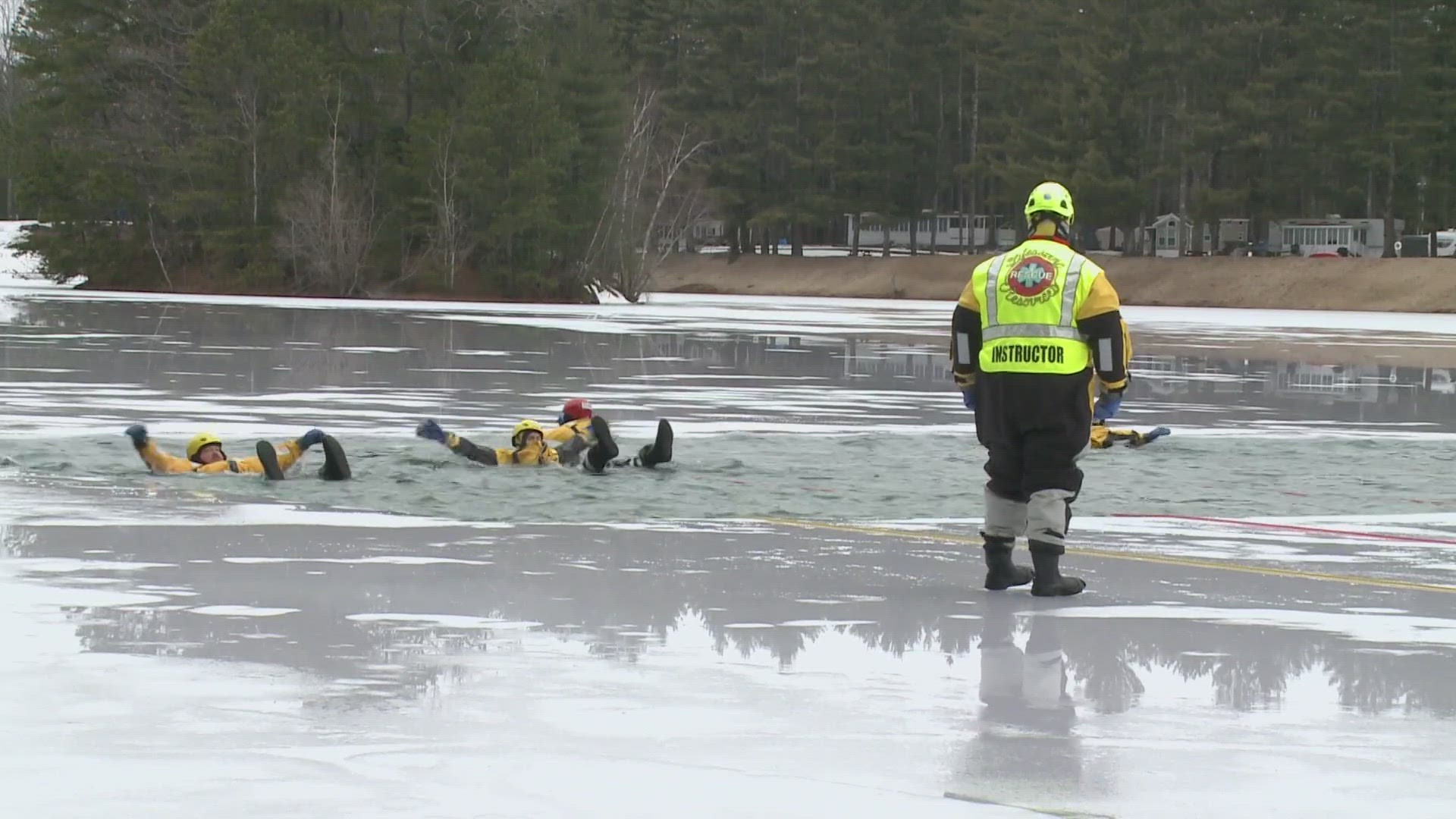SCARBOROUGH, Maine — More than two dozen first responders from around the nation were in Scarborough in February learning the latest techniques for ice rescue training.
From Alaska to Oklahoma, the students visited Maine to bring life-saving skills back home.
First, they had to handle three days of training in the classroom and on the ice.
For first responders like Matthew Walker of Quapaw Nation Fire Department in Oklahoma, February was his first time ever on ice.
"What better place to learn than [with] the people who do this every year," Walker said. "It doesn't happen very often, but we want to be prepared for when it does happen."
Walker said freeze-overs in Oklahoma are rare but pose a significant risk when they do happen.
"It's not something people are used to. We get half an inch of snow and it's like everyone got put on a new planet."
But that's why he's here in Maine with several other first responders, learning how to rescue people from the ice.
In Maine, tracking the number of people who fall through the ice can be difficult. Maine State Game Warden representatives said when someone falls through, it's all hands on deck. But the abnormally warm winter faced by Mainers this year poses new challenges first responders are adapting to.
At Lifesaving Resources in Kennebunkport, they are taking advantage of the unreliable ice in Scarborough to show people what to do.
"No ice is safe ice," Gerry Dworkin from Lifesaving Resources said. "Under these conditions [when] the water is over the top, it's not a safe condition."
Dworkin said the skills learned here can help save lives around the country.
"There is nothing that pleases me more than to graduate these instructor candidates, send them back to their departments... it takes a lot of dedication on their part so it gives me a lot of pleasure," Dworkin said.
Once the first responders make it on the ice they start the exercises. They use ice picks to pull themselves out and learn to use a backboard to lift someone out of the water.
But they told NEWS CENTER Maine the most important key to saving someone from breaking through the ice is timing.
Dworkin said students are taught that once you fall through, you have just one minute to get your breathing under control.
"If you hyperventilate, you pass out," Dworkin said.
Once you get your breathing under control, you then have around 10 minutes to get yourself out before you start losing bodily function.
"Every second counts," Dworkin said.
But even though some of these first responders never stood on ice before, they are walking out of this training with the tools needed to save someone's life, especially in an increasingly uncertain future for cold winters.
"This is definitely going to be memorable," Walker said. "It's going to be a once-in-a-lifetime deal and I hope more people can get it."

